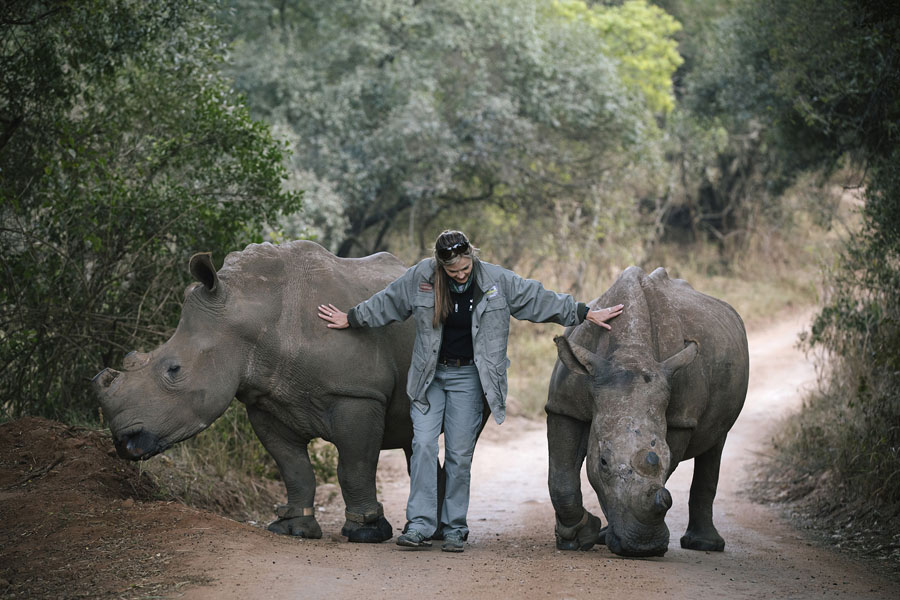Do you need to be closed with something to love it so deeply?
Let’s talk about love, long-distance relationships to be exact. How can you love someone or something that is so far away? What is your reason to love, something that you can not touch, or smell? How can you be in love without hearing the voices of your lovers, softly whisper, sometimes harsh and ragged, perhaps?
You can’t, we as humanity, love the soft touch, the warm hug, the physical intimacy more than everything in the world. Physical intimacy is what distinguishes us from other animals. Your skin is the largest organ in your body, when you engage in pleasant physical intimacy, such as a hug or a touch, your brain releases a hormone called oxytocin that makes you feel good emotionally while lowering your level of anxiety and fear.
But if that’s the case, will we ever love, truly love the rhinoceros?
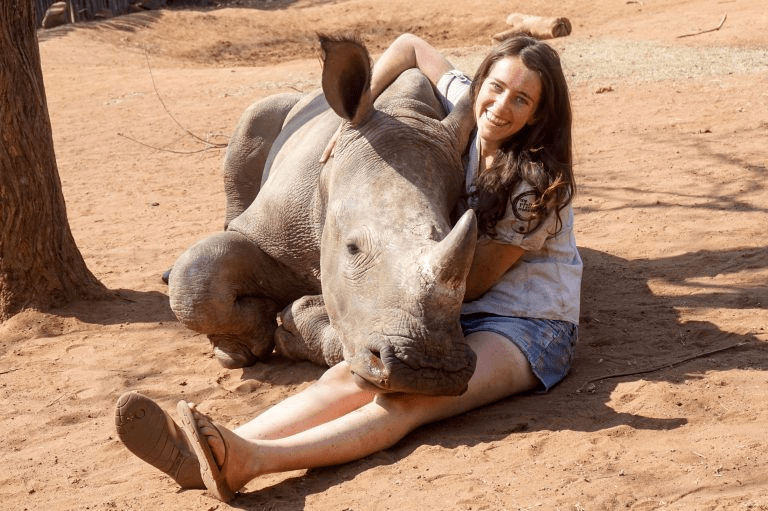
Far away, more than 10.642 km away, among the open savannah, on marshy lands, among tall grasses comes an unfamiliar creature with their wide feet, hairy ears, and to a distant observer, a big gray chunks of walking creature that will sometimes playfully spar you with their horns. You’d hear them before you see them: grunting, growling, mooing, panting, squealing, screaming, and trumpeting. Like a great poem, concerto, or acrylic, their voices serve no specific function, they simply exist within them. We all know the simple lesson of life: love is not quantifiable, and yet it is, perhaps, distance-able.
We all know the simple lesson of life: love is not quantifiable, and yet it is, perhaps, distance-able. We can love, really love, what is near us, what we can touch, what loves us back.
We all know the simple lesson of life: love is not quantifiable, and yet it is, perhaps, distance-able. We can love, really love, what is near us, what we can touch, what loves us back. Can we measure the distance of love? How willing we are to love something that is so far away, 10.642 km away to be exact, and act in urgency to protect the one we love, which in this case, is a mass extinction of the species. There are only two northern white rhinos left in the world, and both are female.
Love Has A Range
Its number: 10.642 km.
Currently, there are about 20,000 white rhinos in Africa, classified as Near Extinction according to the IUCN. And sadly, the last remaining wild population of the northern white rhino subspecies will soon become extinct, as only two females remain in captivity. Africa still has about 5,000 black rhinos, classified as Critically Endangered by the IUCN, with three surviving subspecies: Eastern Black Diceros b. michaeli, Southern Black Rhino South-central Black D. b. minor, and South-western Black D. b. bicornis. The western black rhino subspecies were confirmed to be extinct in November 2011.
It’s a race against time. Up to this point, it is safe to say that the white rhino is indeed facing the fate of extinction, just like its relative, the northern black rhino. And now science is doing all they can to preserve that precious genome. Countries in East Asia and Southeast Asia still have a huge demand for rhino horns. They are said to be a panacea, as well as a symbol of power that many royal and noble individuals desire. And when their bags of gold are in the wild, constantly roam the grasslands, it’s hard for the nearby poachers to not acknowledge their existence.
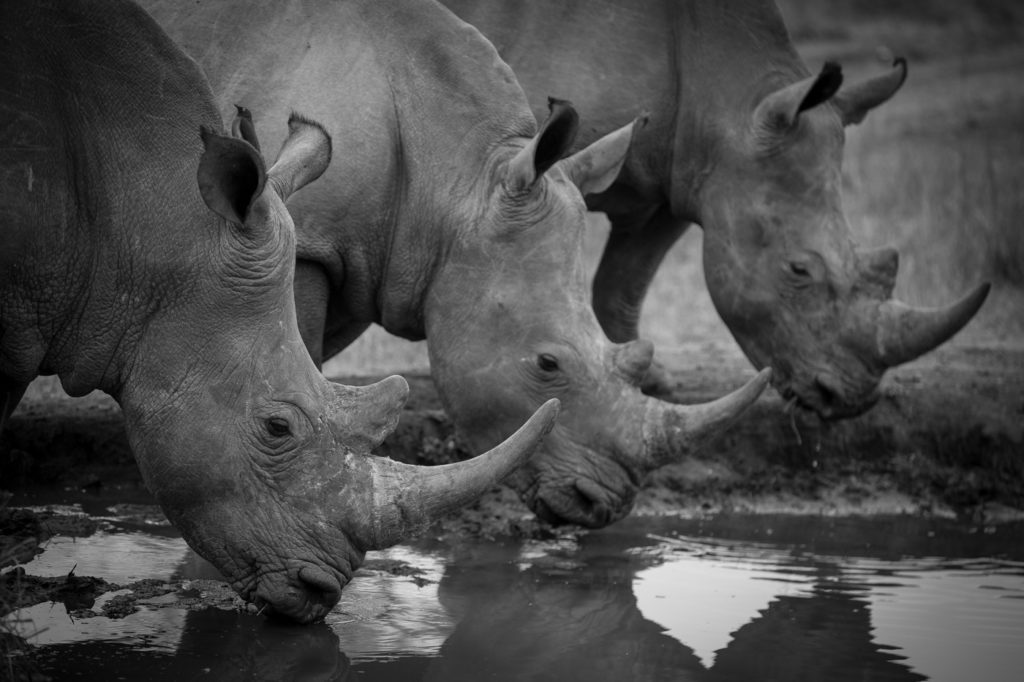
It’s a race against distance. Your love has a range, it’s 10 kilometers from where you live, beyond that number, will you even care that it exists? When we can live so close to each other yet so unbothered by the other person’s existence, what is guaranteed for the love that we are going to spend for a creature that lives so far away? Love is like a star, it shines bright in the daylight, but you can’t see much of it because of the light of another star, the sun, which is closer to us during the day. Only at night, when the world is dark, only then can we see as clearly and as brightly, the dimmer stars.
Your love has a range, it’s 10 kilometers from where you live, beyond that number, will you even care that it exists?
It’s a race against humanity. When you can’t book a flight to Kenya in an instant and visit the girls, scratching her belly and feeling the warm, grunting breath, stand next to, and actually be hugging her with your bare hands. How can you feel? How can you love? When we see an animal as what they are, just another animal, we don’t sympathize, and therefore it’s hard for us to love and protect. Can we blame the poachers for maliciously hunting them down, just for an ancient myth that has been around for decades with no scientific proof? Rumors about the billions of dollars worth for a single horn of the creature, which can be less than an arm’s length, have pushed the last rhinoceros to stand alone in opposition to humans. It’s all about the money, and never the love.
But if you see them every day, will this be a different story?
He Was So Close That It Was Love
The wild day passed, the image of the last rhinoceros flickering through the memory suddenly came to life. Dieu Kgiang was sitting there, passionately telling his story of the encounter he had with the lone one-horned Javan rhinoceros in the wetlands of Bau Chim, when it returned to take a mud bath and lick the soil in search of minerals. We gave the man a nickname, which he kindly accepted. We called him “The memory keeper of the last rhino in Vietnam”.
In the heart of a man who has lived his whole life on the land built for many generations, memories of the last one-horned Javan rhinoceros that was shot down in the old forest of Cat Loc is still there, lurking in his mind, like a ghost in a haunted nightmare. 10 years is not a short period of time, but it’s surely not long enough to heal the pain.
10 years is not a short period of time, but it’s surely not long enough to heal the pain.
The large rhinoceros, with his black body, appears like a shadow of a buffalo, short and long, a sharp horn located in front of the nose that is almost a hand long. From time to time, Dieu Kgiang found it walking around in the Bau Chim area, maybe because of the loneliness it has to endure away from the hunt of humanity. Only a few times a month, when the rhino risks itself to escape the old forest and go out to be friends with the domestic buffalo herd.
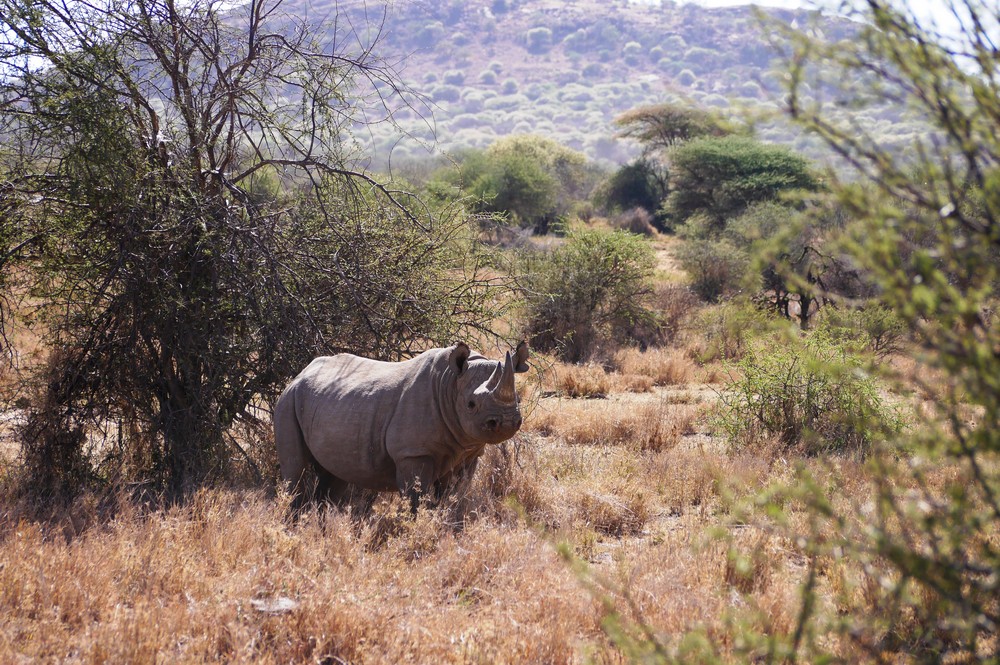
In the land of the gentle STeng people, the lonely Javan rhino finally feels at peace and secure, even though danger is still lurking around. Rhinos are inherently harmless creatures, they never compete with other species for food or territory, nor do they eat animals. Rhino’s food is mainly reeds, bamboo shoots, rattan buds, leaves, and sometimes they lick the soil to find minerals. In the old forest of Cat Loc, the only enemy of the rhinoceros is humans. The free migrations have made this peaceful land cramped. The “expansion”, deforestation by humans makes territories and food for the rhino increasingly narrow and scarce, not to mention the fact that the poachers were hunting it day and night.
The rhino can sense who is the enemy and who is not. Dieu Kgiang recalled multiple times standing next to the animal, so close that he could clearly see its majestic horn. Never once did it make a fuss, knowing that he’s not the one who was causing all the dangers. “At first, it often kept a very long distance from me. But since I met him all the time, he got used to me, so much that when I stood close, he still leisurely licked the ground looking for minerals. One day when he was covered with mud, I sat right on the shore!”, Dieu K Giang said.
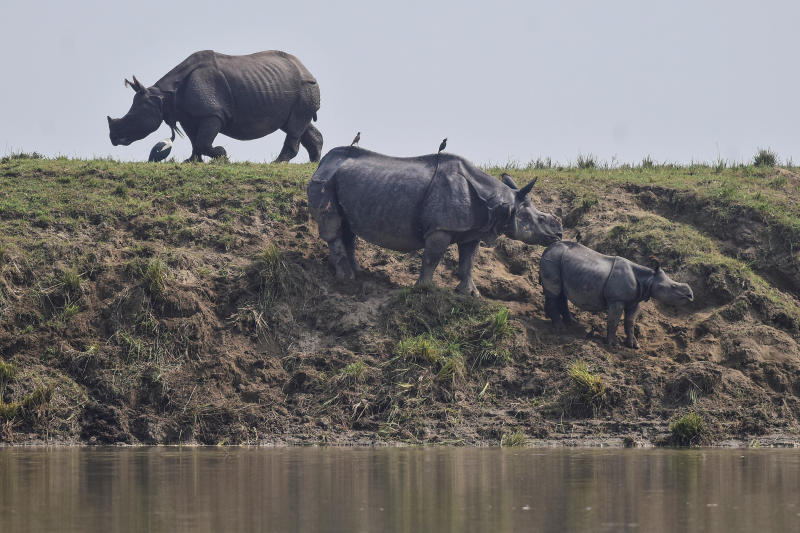
Then one day, the sound of gunfire resounded in the old forest of Cat Loc. Not long afterward, wildlife experts from the IUCN (International Union for Conservation of Nature and Natural Resources) announced: The last one-horned Javan rhinoceros in its population has died in the Cat Loc old forest. The rhinoceros species has officially gone extinct after decades of glimmering hope through conservation projects. Dieu K Giang was in pain when he heard the news. For him, the feeling is like losing a loved one. It was a late afternoon in April 2010, 10 years ago when the fateful shotgun fired.
Dieu Kgiang was in pain. Afternoon shadow disappeared from the mountain, the night crept through the cashew fields, Dieu K Giang shook his head, saying that from that day, Cat Loc mourned its loss through the sound of silence. The soul of the mountains and the sacred symbol of the gentle STeng community nestled in the old forest was killed by poachers, and life has never been the same. Now, when chasing buffalo herds into the Bau Chim area to graze, or roaming around in the old forest of Cat Loc to pick rattan and bamboo shoots, Dieu KGiang tries to imagine the image of the last solitary one-horned rhinoceros, his black body appears like a shadow of a buffalo, short and long.
He was so close that it was love.
I Can’t Wait To See The Baby Northern White Rhinos
Anyone who has pets and sees them as a part of their family has known the joy of welcoming furry friends into your home, the anxiety of seeing them sad and unwell, and the grief of having to say goodbye to them for a short period of time or for eternity. But that is only applicable for pets, a kind of animal that you can keep around in your home and can be introduced to your friends when they come over. When it comes to wildlife, oversize animals, this becomes a different story.
You can’t adopt a rhinoceros and keep them at your home, because that’s just not how life works. Three species of rhino: black, Javan, and Sumatran are critically endangered. Today, a small population of Javan rhinos is found in only one national park on the northern tip of the Indonesian island of Java. So if you are planning to have this huge creature as a pet in your home, you might also get ready to be contacted by the IUCN. Since keeping them close is not possible, only a few very lucky individuals have the chance to touch and rub their bellies every day.
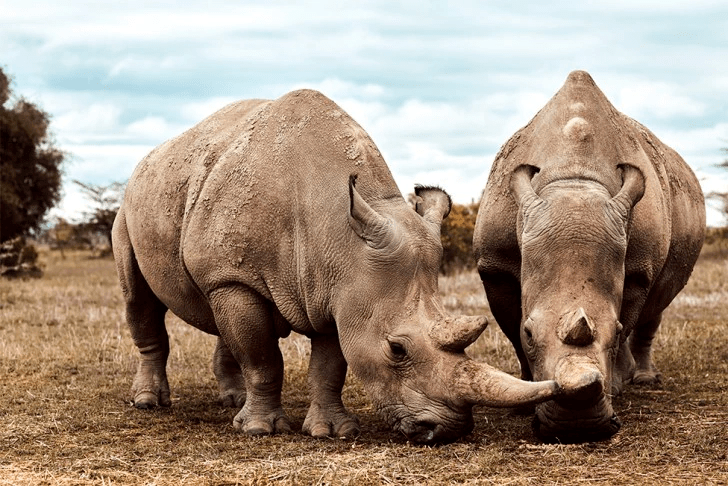
Meet James Mwenda, the guy who takes care of the last two northern white rhinos on earth. Every day, he said good morning while rubbing their ears as a way to show his affection, then he goes to the enclosure where the rhinos spend their nights to check in with them and make sure that when he releases them to the enclosure, they will be fine. “These animals are like my family. I spent much more time looking after them than I do with my family” he shared in a documentary with The Dodo. In the documentary, he revealed the number of days he spent with the rhinoceros, one of whom he amusingly called “his wife”, and that is 25 days per month.
People turn on the news and see climate change reports, animal endangered alerts, and even human crisis disasters happen every day, but somehow we still are able to go to bed soundly right afterward, knowing that this thing that we are seeing, happens so far away that it wouldn’t affect us that much.
Although he may be considered as one of the lucky chosen ones, he definitely doesn’t want to be the last person to see this beautiful creature. The ideal scenario and hope, for now, is that IVF becomes a remedy, so that science can be able to save them and their species. “I can’t wait to see the baby northern white rhinos”, he said.
When the range between you and the animal is just 3 feet away, you will clearly see the impact you have on them, and they have on you during the course of time you spend with them. People turn on the news and see climate change reports, animal endangered alerts, and even human crisis disasters happen every day, but somehow we still are able to go to bed soundly right afterward, knowing that this thing that we are seeing, happens so far away that it wouldn’t affect us that much.
For James Mwenda and so many more people who have had the chance to meet, watch and fall in love with them day by day as they get up to the image of them lurking from the near distance. But for us, who are living 10.642 km away, will there be a day that we are able to love and hold the rhinos close to our hearts.
IVolunteer International is a 501(c)3 tech-nonprofit registered in the United States with operations worldwide. Using a location-based mobile application, we mobilize volunteers to take action in their local communities. Our vision is creating 7-billion volunteers. We are an internationally recognized nonprofit organization and is also a Civil Society Associated with the United Nations Department of Global Communications. Visit our profiles on Guidestar, Greatnonprofits, and FastForward.
